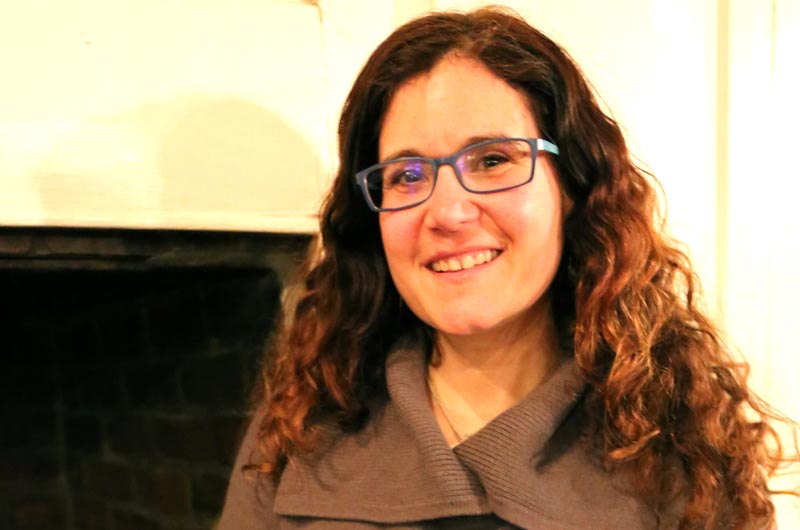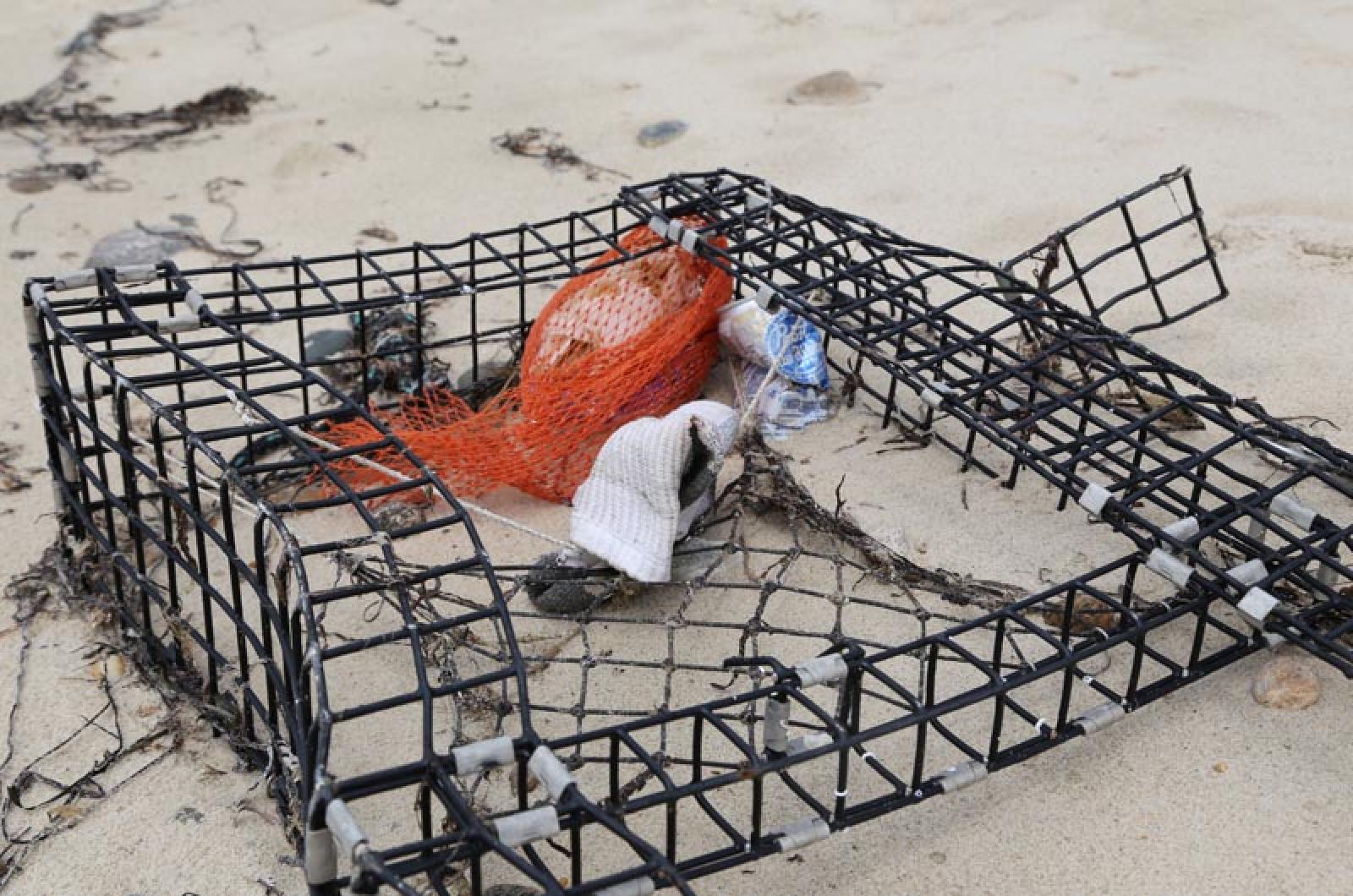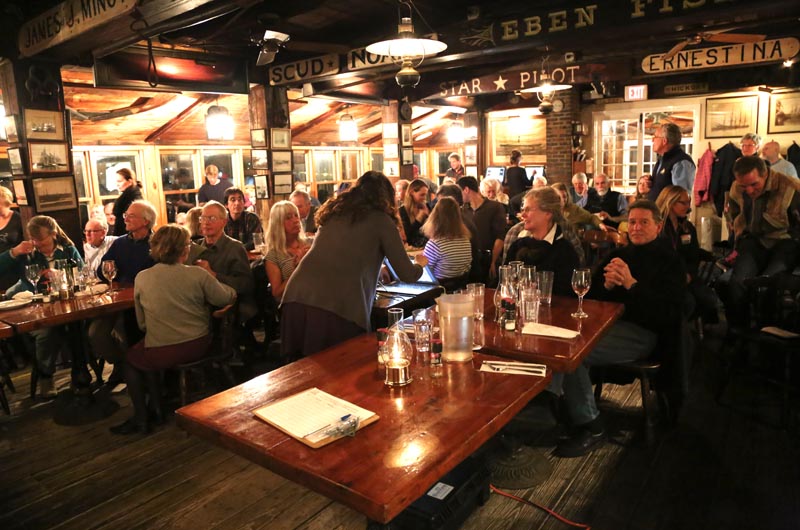On Thursday evening at the Black Dog Tavern, Rachael Miller, co-founder of the Rozalia Project, held up an eight-ounce plastic water bottle. “A water bottle like this will turn into 55,000 pieces of microplastic,” she said. “It doesn’t go away, it just gets too small to see.”
Ms. Miller was the featured speaker at Sail MV’s winter lecture series. Earlier that day she had taken a 20-minute walk on Owen Park Beach in Vineyard Haven. On a table beside her she placed a “trash museum” of items she had collected on her walk — ribbons, plastic straws, deflated balloons, cigarette butts, water bottles and a Mocha Mott’s cup. In all there were 104 items filling a white plastic bag—which she found hanging from a nearby tree.
“This is going to be the most optimistic talk about ocean trash that you have heard,” she said. “For us, knowledge is going to be key in dealing with it, preventing it and keeping it from getting worse.”

Ms. Miller co-founded the Rozalia Project with her husband five years ago, an idea that came to them while vacationing on Matinicus Island off the coast of Maine.
“The beach next to the little cottage we were renting was covered in trash, absolutely covered, and I spent the first day of our three-day vacation pulling it all up above the high tide line,” she said. “My husband had an epiphany and said you hate ocean trash, let’s do something about it. So we decided to form an organization.”
And so Rozalia Project, named after her great-grandmother, was born.
“And then we went and got a boat,” she said. The boat is called American Promise, which they bought from the Navy Academy.
Now with a group of six passengers, three crew members and a small remote operated vehicle called Hector the Collector, the organization’s mission is “to protect the ocean and conserve a healthy thriving marine ecosystem.”
Recent studies report that eight million tons of trash enter the ocean each year.
“We are learning where a lot of it goes, and that is in our urban harbors,” said Ms. Miller.
And beyond.
Several years ago the discovery of five garbage patches, or ocean gyres, captured the attention of environmental groups and the media.
“In the center of all of our oceans is a place where the currents accumulate whatever has been floating — organic and inorganic,” she explained. “These are circulation patterns that are big scale.”
Scientists have found that much of the plastic debris swirling around has broken down into tiny little pieces. The result is a trash soup of sorts made up of micro plastic and ocean water which is ingested by plankton, feeder fish, larger fish and ultimately humans and animals.
“We have a bit of a situation with plastic and it’s that it’s a forever material. It doesn’t dissolve and it doesn’t biodegrade, it does what’s called photo degrade. The sun makes it brittle and then it breaks up into little pieces so it just breaks up into small and smaller bits of micro plastic so it doesn’t disappear it just makes it harder to see,” said Ms. Miller.
“We don’t believe that the answers or solutions are going to come from the center of our oceans, where it’s really hard to get to, costs a lot and it’s hard to extract the tiny pieces of plastic from the water,” she said.
So the Rozalia Project focuses their efforts on the cleanup of urban and coastal waters where, she says, 80 per cent of all marine debris enters the ocean. With the help of Hector the Collector, the Rozalia Project collects debris from the ocean floor.
“You’ve all seen shorelines with trash and you’ve all seen what’s floating on the harbor or coastal waters, but not so many people see what’s underwater.”
Ms. Miller shared slides of debris that Hector and the American Promise crew have collected on their expeditions along the east coast.
“We have recovered more plastic cups than we have anything else from the sea floor and I was surprised by that,” she said.
With their ocean cleanup efforts, they also collect as much data as possible. Analyzing the data, Ms. Miller says, offers an opportunity for solutions.
So what are the solutions? Ms. Miller offered a few simple ones in her presentation, including practicing the three R’s.
“Reduce, reuse, recycle,” she said.
And she encouraged trash awareness to start at home. Last fall, along with Brock Callen, Ms. Miller led a group of 40 first graders in a beach cleanup expedition.
“We kept data, we cleaned up and it was really fun,” she said.
This Saturday, the Vineyard Conservation Society’s annual all-Island beach cleanup will be held on each of the beaches from 10 a.m. to noon. Trash bags will be provided and a volunteer will be on site to tally the debris collected, data that Ms. Miller encouraged the organization to analyze.
“We need to talk about what we know about the problem,” she said. “For us, knowledge is going to be key in dealing with it, in preventing it and fixing the problems that we have already, and keeping them from getting worse.”






Comments (6)
Comments
Comment policy »